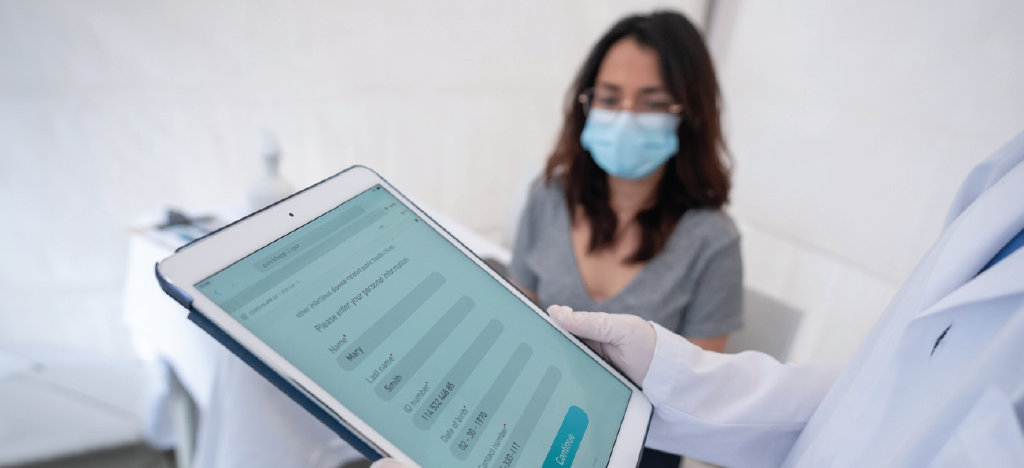Unlock the secrets of payment posting with our comprehensive guide! From understanding the process to optimizing efficiency, this article will provide you with the knowledge and tools to streamline your payment posting procedures.
Payment posting is an essential process in financial management that plays a crucial role in the revenue cycle of healthcare organizations. In this comprehensive guide, we will explore the basics, the different types the challenges, and its impact of efficient on the revenue cycle.
Understanding the Basics

Payment posting refers to the task of recording and reconciling payments received from patients, insurance companies, and other sources. It involves updating patient accounts with the appropriate payment information, such as the amount paid, the date of payment, and the method of payment. Its accuracy and timeliness of are critical as they directly impact the financial health of healthcare providers.
When a patient makes a payment, whether it is for a medical service or an insurance claim, it is essential to accurately record and apply that payment to the patient's account. This process, known as payment posting, ensures that the financial information captured during the billing process is properly reflected in the organization's revenue records. By accurately posting payments, healthcare providers can maintain an accurate and up-to-date account of the payments owed to them.
Definition and Importance
Payment posting is the process of accurately recording and applying payments to patient accounts. It ensures that the financial information captured during the billing process is properly reflected in the organization's revenue records. Accurate payment posting facilitates efficient revenue cycle management, enabling healthcare providers to track and collect the payments owed to them.
Accuracy is crucial for several reasons. Firstly, it helps healthcare providers maintain a clear and accurate picture of their financial health. By recording payments promptly and accurately, providers can assess their revenue streams and make informed decisions regarding their financial management.
Secondly, it plays a vital role in ensuring that patients' accounts are up to date. When payments are promptly applied to patient accounts, it helps avoid confusion and potential disputes regarding outstanding balances. Patients can easily see what they have paid and what remains outstanding, promoting transparency and trust in the billing process.
The Role of Payment Posting in Financial Management
Payment posting plays a significant role in financial management by ensuring that payments received are accurately reflected in the organization's financial statements and systems. It helps healthcare providers maintain accurate revenue records, track outstanding balances, and identify any discrepancies or errors in the payment process. Timely and accurate payment posting also improves cash flow management, as it enables healthcare organizations to identify and address any delays or issues in the payment cycle.
Furthermore, accurate payment posting allows healthcare providers to analyze their revenue patterns and identify trends. By tracking payments and identifying any discrepancies or irregularities, providers can take proactive measures to address potential issues, such as denied claims or delayed payments. This proactive approach helps optimize revenue collection and ensures the financial stability of the organization.
In conclusion, payment posting is a critical process in healthcare financial management. It involves accurately recording and applying payments to patient accounts, ensuring that the organization's revenue records are up to date and accurate. By maintaining accurate payment posting practices, healthcare providers can effectively manage their revenue cycle, track outstanding balances, and address any discrepancies or issues in the payment process.
The Process of Payment Posting

The process of payment posting involves several steps to ensure accuracy and efficiency. Let's explore the key steps involved in this process.
Payment posting is a critical aspect of healthcare revenue management. It plays a crucial role in ensuring that healthcare providers receive timely and accurate payments for the services they provide. Let's dive deeper into each step of the payment posting process to understand its significance.
Steps Involved in Payment Posting
1. Receiving Payments
Payments can be received through various channels, such as checks, electronic funds transfers, credit card payments, or online payment portals. It is essential to accurately record the payment details, including the source, amount, and relevant patient information.
When payments are received, they need to be promptly recorded to maintain accurate financial records. This step involves careful data entry to capture all the necessary information. Healthcare organizations often have dedicated teams or software systems in place to handle this task efficiently.
2. Verification and Validation
Before posting the payment, it is crucial to verify the accuracy of the payment information. This may involve cross-referencing the payment details with the corresponding bill, insurance claims, or patient records.
Verification and validation are essential to ensure that the payment received matches the expected amount and is associated with the correct patient account. This step helps identify any discrepancies or potential errors that need to be addressed before proceeding with the payment posting process.
3. Applying the Payment
Once the payment is verified, it is applied to the appropriate patient account. This involves updating the account with the payment amount, date, and payment method.
Applying the payment accurately is crucial to maintain the integrity of patient accounts. It ensures that the payment is correctly reflected in the financial records and helps track the outstanding balance for each patient.
4. Reconciling the Accounts
After the payment is applied, the accounts need to be reconciled to ensure that the payment has been accurately reflected in the financial records. This involves matching the posted payment with the corresponding bill or claim, adjusting any discrepancies, and resolving any outstanding balances.
Reconciliation is a crucial step in the payment posting process. It helps identify any discrepancies between the payment received and the expected amount. By resolving these discrepancies, healthcare organizations can maintain accurate financial records and ensure that all payments are properly accounted for.
5. Reporting and Documentation
Finally, the process requires proper documentation and reporting of the payment activities. This includes generating reports of the payments posted, tracking any outstanding balances, and maintaining records for audit and compliance purposes.
Reporting and documentation play a vital role in financial management and compliance. Accurate and detailed records help healthcare organizations track payment trends, identify potential issues, and provide necessary documentation for audits or regulatory requirements.
Automation
With advancements in technology, many healthcare organizations have implemented automated payment posting systems. These systems use optical character recognition (OCR) and machine learning algorithms to automatically extract payment information from remittance advices and other documents. Automation not only improves efficiency but also reduces the risk of errors and enhances overall accuracy.
Automated systems can process large volumes of payments quickly and accurately. By eliminating manual data entry and automating the verification and reconciliation processes, healthcare organizations can streamline their revenue management workflows and allocate resources more efficiently.
Furthermore, automation reduces the risk of human error, ensuring that payment information is accurately captured and applied to the appropriate patient accounts. This technology also provides real-time reporting and analytics, enabling healthcare organizations to gain valuable insights into their payment processes and identify areas for improvement.
In conclusion, the process is a critical component of healthcare revenue management. By following the steps outlined above, healthcare organizations can ensure accurate and efficient payment processing, leading to improved financial stability and patient satisfaction.
Different Types
Payment posting can be classified into different types based on the methods and processes involved. Let's explore two common types.
Manual Payment Posting
Manual payment posting refers to the traditional method of manually recording and applying payments to patient accounts. This process involves manually entering the payment details into the billing system and updating the patient's account accordingly. While it can be time-consuming and prone to errors, it offers flexibility in handling complex payment scenarios and exceptions.
Electronic Payment Posting
Electronic payment posting involves the automated processing of payments received electronically. This can include electronic funds transfers, credit card payments, or payments received through online portals. It also eliminates the need for manual data entry, reducing the chances of errors and improving efficiency. It also enables real-time posting, allowing healthcare providers to track and reconcile payments more effectively.
Challenges
Despite its importance, payment posting can present various challenges for healthcare organizations. Let's explore some common errors and the strategies to overcome these challenges.
Common Errors
1. Data Entry Errors: Manual data entry can lead to errors, resulting in incorrect payment application or mismatches between payments and patient accounts.
2. Denial Management: Incorrect or incomplete payment posting can lead to claim denials, causing delays in reimbursement and impacting the revenue cycle.
3. Coordination Challenges: Payment posting requires coordination between various departments, such as billing, coding, and accounts receivable. Communication gaps and lack of coordination can lead to errors.
Overcoming Challenges
1. Training and Education: Providing adequate training and education to staff members involved in payment posting can help reduce data entry errors and improve accuracy.
2. Automation and Technology: Implementing automated systems and leveraging technology solutions can streamline the process and reduce errors.
3. Improved Communication and Collaboration: Enhancing communication and collaboration between departments can minimize coordination challenges and improve payment posting accuracy.
The Impact of Efficiency

Efficient processes can have a significant impact on the revenue cycle and financial health of healthcare organizations. Let's explore the benefits of accurate payment posting and the effect it has on the revenue cycle.
Benefits of Accuracy
1. Improved Cash Flow: Accurate payment posting ensures timely recording of payments, enabling healthcare organizations to manage their cash flow more effectively.
2. Reduced Claim Denials: Accurate payment posting reduces claim denials by accurately applying payments to patient accounts and ensuring proper reimbursement.
3. Enhanced Financial Reporting: Accurate payment posting enables healthcare providers to generate accurate financial reports, track revenue trends, and make informed financial decisions.
4. Streamlined Revenue Cycle: Efficient payment posting streamlines the revenue cycle, reducing delays in payment processing and enhancing overall revenue efficiency.
The Effect on Revenue Cycle
Payment posting is an integral part of the revenue cycle management process. It impacts key revenue cycle metrics, such as days in accounts receivable, net collection rate, and cash flow. Efficient processes ensures that payments are accurately recorded and applied, minimizing delays in payment processing, and optimizing revenue collection. It also allows healthcare organizations to identify and address any issues or discrepancies in the payment process, further enhancing revenue cycle performance.
In conclusion, payment posting is a critical process in financial management, ensuring that payments received are accurately recorded, applied, and reflected in the organization's financial records. By understanding the basics, exploring the different types, addressing common challenges, and embracing efficient practices, healthcare organizations can optimize their revenue cycle and enhance their financial performance.
Going Forward with BillFlash
With BillFlash, practices can go further by optimizing their revenue cycle, efficiently collecting past-due A/R, and providing patients with a convenient and secure payment experience. With a user-friendly interface and industry experts available for all your billing, payments, and collections needs, BillFlash is the perfect solution for small practices.

